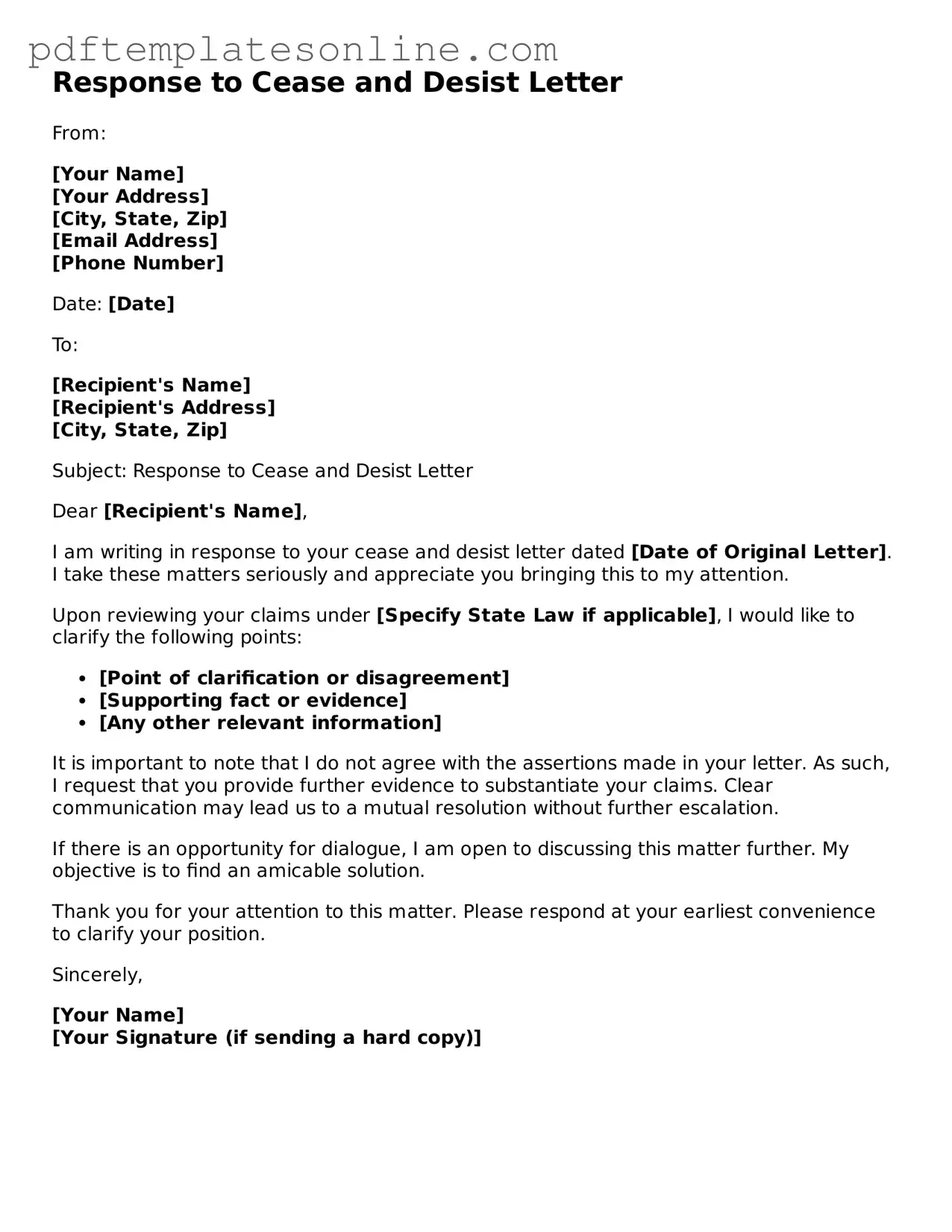Fillable Response to a Cease and Desist Letter Document
A Response to a Cease and Desist Letter form is a document used to reply to a request demanding that an individual or organization stop certain actions. This response is crucial for addressing the claims made in the letter and can help clarify your position. Understanding how to properly fill out this form can protect your rights and interests.
Access Response to a Cease and Desist Letter Editor Now
